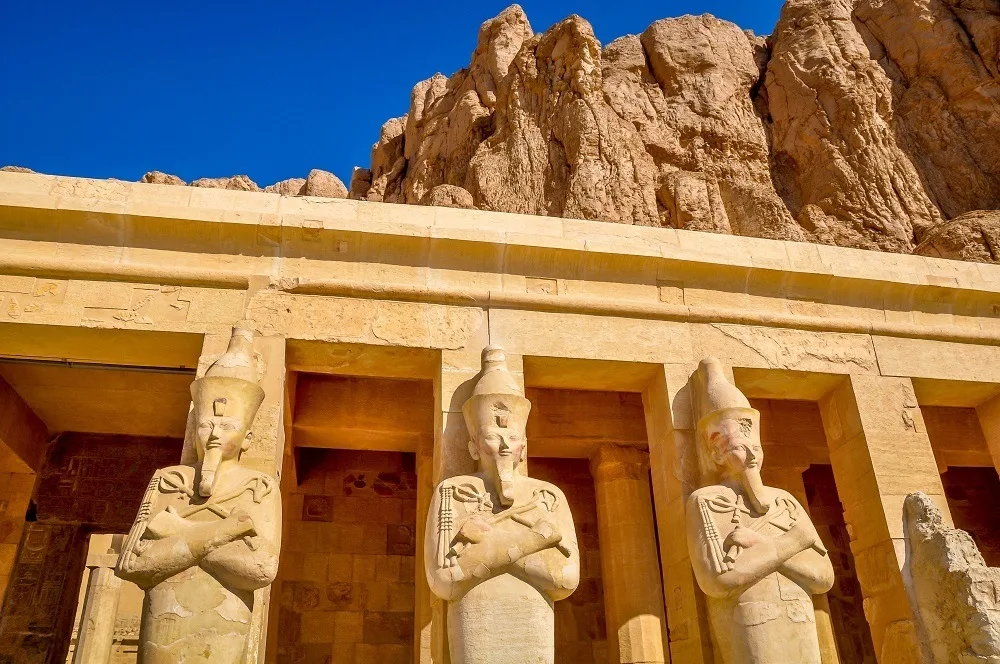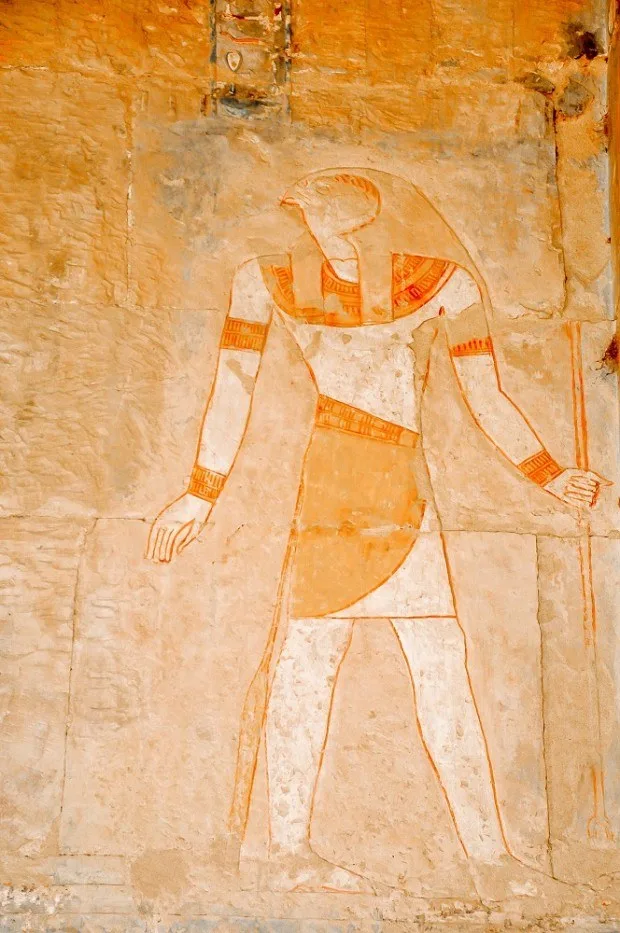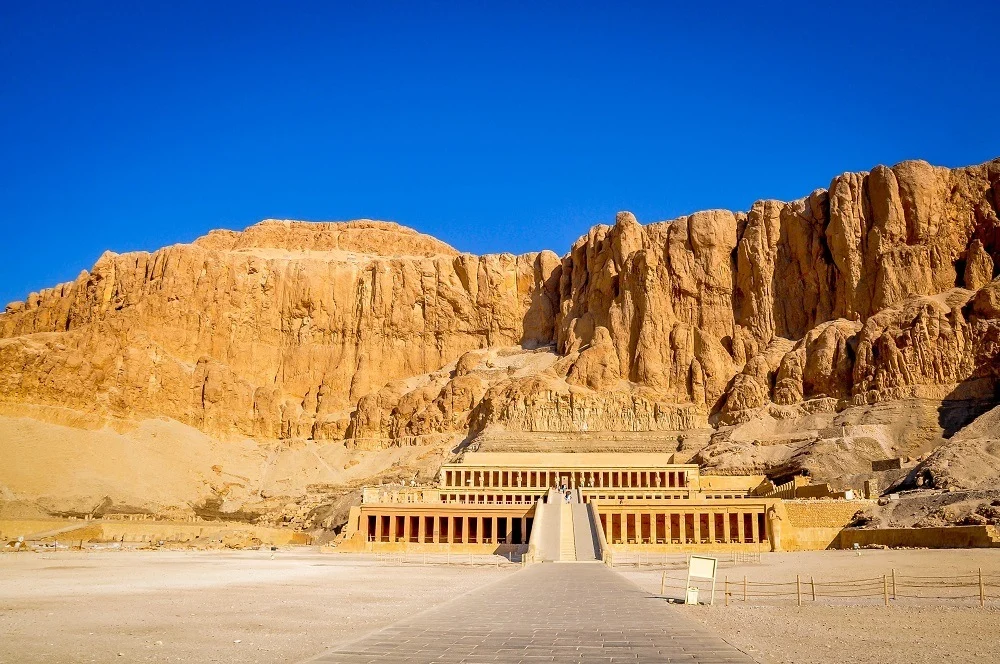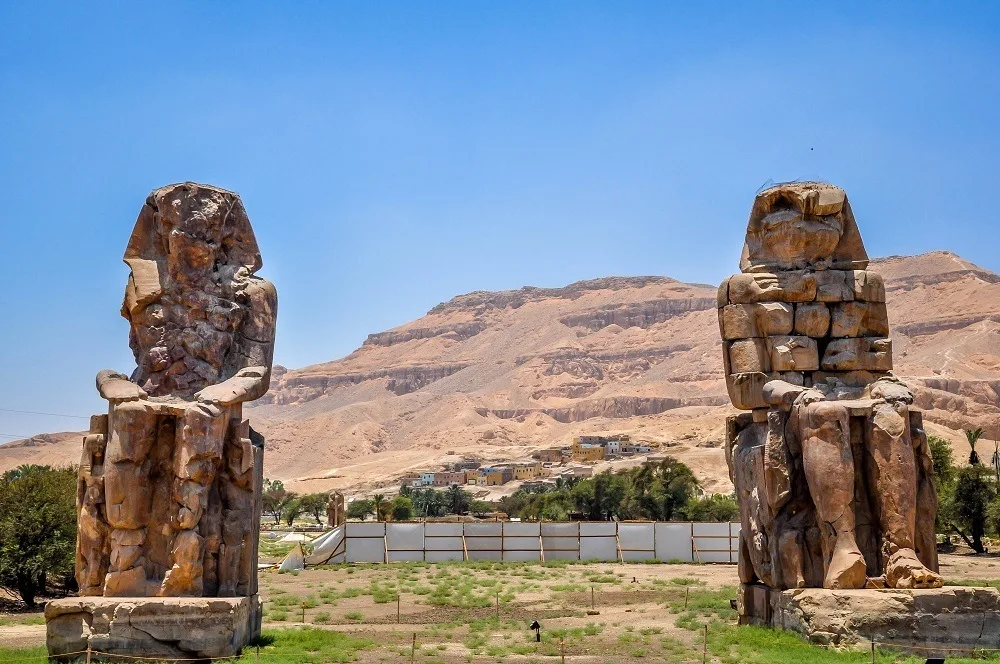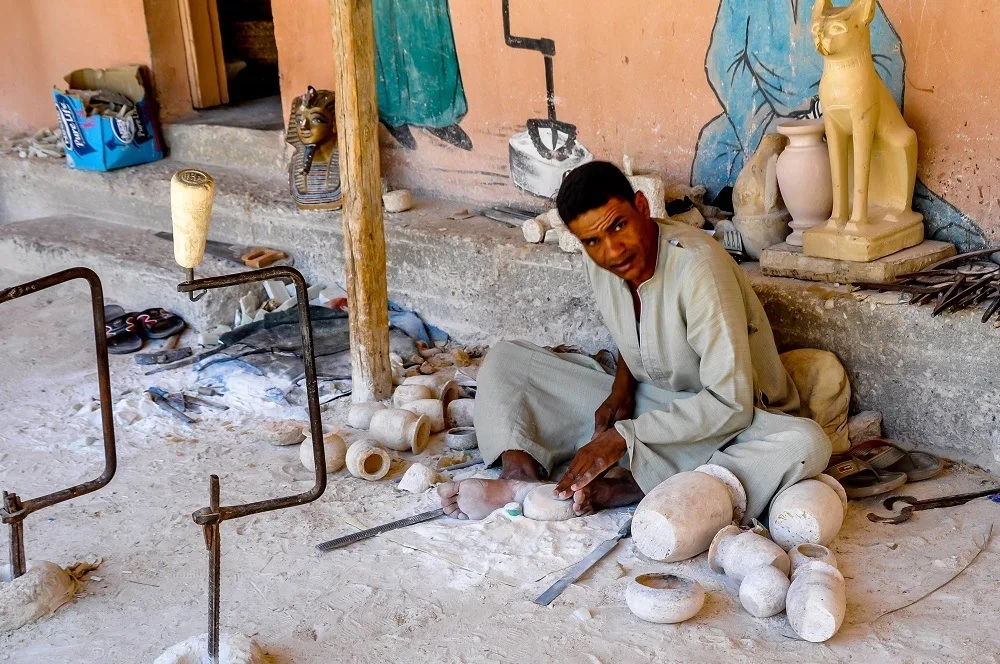We awoke early again this morning to head straight to the Queen Hatshepsut Temple before it got too hot. The multi-tiered temple is absolutely imposing set up against the rock. The building itself is on a grand scale, but most of the carvings were destroyed by Ramses II – a pity. But the carvings that remain retain much of the color – in fact this site has some of the best color of all the sites we got to experience in Egypt.
Hatshepsut’s Temple was the site of “the problem” or “the accident” (as Egyptians call it) – where Islamic terrorists murdered 62 mostly Western and Japanese tourists and hacked them to pieces with machetes. This event totally decimated Egyptian tourism for years and it only recently fully recovered before the global financial crisis and the Egyptian Revolution of January 25th.
After the Queen Hatshepsut’s Temple, we went to the Valley of the Kings where the pharaohs of the middle and new dynasties were buried, after they stopped using the pyramids as burial sites (making this part of the Thebes UNESCO World Heritage Site).
The valley was somewhat smaller and narrower than I had expected and the tombs were everywhere! And it was very, very hot here. We visited the tombs of (in order): Ramses IV, Merenpath, Ramses III, Tutankhamun and Ramses VI (and Ramses V, since they were in the same tomb chamber). We were impressed that the tomb walkways were large and we could stand upright (after having to bend over to go into the pyramids).
By far the highlight was the tomb of Ramses VI – with its vibrant color and dual sarcophagus (for both Ramses V and Ramses VI). This was an extra ticket but was absolutely worth it. We also bought the special ticket to go into King Tut’s tomb, which we thought was kind of a “must do.” As our guide had warned, it was very small and unfinished because of the pharoah’s young age when he died. Not really worth it, but seeing the mummy actually in the tomb was nice.
On the way back to the hotel, we stopped briefly at the Collossi of Memnon. The two imposing statues are essentially the entrance to, and all that is really left of, Amenhotep III’s temple. There wasn’t too much to see, but some excavation was ongoing.
We made another brief stop at one of the many alabaster factories in the valley to see some carving and buy a few souvenirs (we stopped at Badr Factory). The owner, Mostafa Abd El Aal Beder, could not have been nicer and was clearly in need of some business.
We saw a brief carving demonstration, and the owner educated us on machine-made versus hand-carved alabaster as well as on the ways that some companies fool tourists by making soapstone or wax look like alabaster. The four of us bought several items from their wide selection, including a candle holder (us) and a baboon (mother-in-law).
After the activity of the early morning and afternoon, the rest of the day was pretty low-key. We relaxed by the pool and spent some time shopping at the Fair Trade Market across from the Luxor Temple and the nearby souq. Our experience here was much more manageable than at the Aswan market or Khan al-Khalili in Cairo – the vendors weren’t quite as aggressive.
Dinner was at Jamboree in the old souq. This place serves up food of all kinds. I had the Egyptian Mousaka – vegetables and minced meat in a boiling tomato sauce crusted over with gooey cheese. It was quite good, but the girls’ frakh tawouk (chicken) was better. They have a lemon juice in Egypt that is like a non-watered down lemonade. It is excellent and the best one of the whole trip was here at Jamboree.
After dinner, we went back to the Pyramisa Hotel Luxor to check email, have an ice cream and go to bed. The good news for us was that the air conditioning did work – sort of. Not as strong or as cool as it should have been, but it did work.
Lance Longwell is a travel writer and photographer who has published Travel Addicts since 2008, making it one of the oldest travel blogs. He is a life-long traveler, having visited all 50 of the United States by the time he graduated high school. Lance has continued his adventures by visiting 70 countries on 5 continents – all in search of the world’s perfect sausage. He’s a passionate foodie and enjoys hot springs and cultural oddities. When he’s not traveling (or writing about travel), you’ll find him photographing his hometown of Philadelphia.

